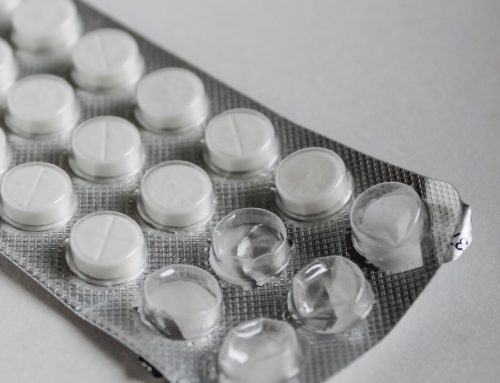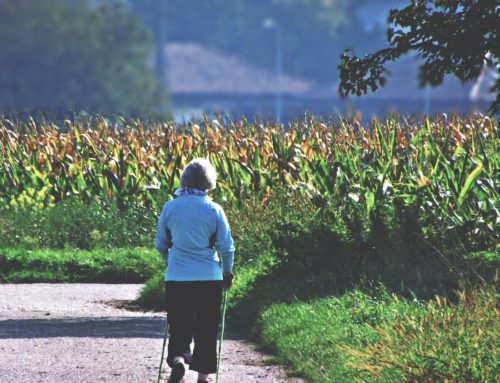Why do some people think that all the superfoods we’re supposed to eat are so expensive?
They don’t have to be. The media tells us every six months that there is a new mystical fruit or oil that we have to consume in order to live long. Let’s not fall for that marketing spin. They may be wonderful foods to try but as you will see below, some of the healthiest foods are very economical. The foods that are good for us are actually far more budget-friendly and more available than we’re made to think.
Here are my top 10 superfoods for good health, weight loss, and delicious eating.
10 Healthy Superfoods to Include in a Balanced Diet
1. Oatmeal
A bowl of oatmeal a day helps to keep the cholesterol down. Oats are high in dietary fiber which helps lower cholesterol and reduce the risk of cardiovascular disease. A wonderful component of oats is beta-gluten, a water-soluble fiber. The fiber soaks up water when in the body and moves slowly through the digestive tract, attaching to bile acids along the way and carrying them out of the body. As bile acids are composed of cholesterol, oats reduce the amount of cholesterol the body absorbs. Fiber also keeps your bowels healthy by carrying out toxic substances and creating easy to pass bowel daily movements. Oats come in a range of forms from least-processed to most-processed. Choose only the least-processed forms such as steel-cut oats and rolled oats. Avoid instant oatmeal and quick oats. Instant oats are high glycemic which means they cause your blood sugar to rise quickly. This negates all the good effects of the oats. Try a simple and very tasty oatmeal recipe for breakfast tomorrow.
2. Oranges
Like oatmeal, oranges have a large amount of cholesterol-banishing soluble fibre. In addition, they contain vitamin C and potassium, which reduces the negative effects of sodium. Enjoy an orange after your meal for a fast, fruity dessert. This does not hold true for orange juice, which lacks fiber and is like drinking a sugary drink. If you squeeze it yourself once in a while, you can enjoy the luscious taste. But think of it as dessert, not a health food.
3. Beans and lentils
We should all eat more beans. They are powerhouses of protein, fiber, and minerals. Beans and lentils can help keep our blood pressure in check. In addition they contain a lower proportion of starch than grains like rice. If you are diabetic, have more beans. Beans and lentils can help reduce our food costs too. They can be cooked with many vegetables, eaten cold, hot, mashed or in soup. Using beans or lentils for a main course with a small amount of meat for flavoring can stretch the food dollar. For dinner, I often have lentils in salad with vegetables, or in a soup. I place lentils in the bottom of a roasting pan, add chicken breasts and sliced onions and homemade (or organic store bought) broth. Cover and cook until the chicken is done and you have a yummy meal that just needs some greens. Here is a recipe for lentil soup and another for refried beans.
Lentil Soup
Ingredients:
- 2 cups red lentils
- 1 cup brown or green lentils
- 3 cups water
- 2 large onions-one cut into 1” cubes and the other chopped more finely
- 3 large ripe tomatoes cut into cubes
- 1 tablespoon olive oil
- 2 tsp powdered cumin
- 2 tsp salt
- a pinch of pepper and cinnamon
Directions:
- Boil lentils, rice, cubed onion, cubed tomato, cumin and salt in the water until tender.
- Put through a food grinder like a Foley food mill (do not discard the fibers but mix them in with the more liquid part.)
- In a saucepan sauté until golden in olive oil: the finely chopped onion, pepper and cinnamon.
- Mix all ingredients together, adjust the seasonings and add some lemon. Simmer for ½ hour to blend the flavours.
4. Spinach or kale
I encourage all my patients to enjoy more dark-colored leafy greens. They really are nature’s plentiful and remarkable superfood. Packed with vitamins, minerals, and carotenoids, studies have shown that leafy greens likely reduce the risk of cancer. In addition, they are a wonderful source of calcium. Enjoy some spinach salad today.
5. Avocados
Enjoy your guacamole. Avocados are high in fat, but only the good kind of fat. The monounsaturated fat they contain may help reduce blood cholesterol. They also have large amounts of beta-carotene, fiber, and potassium (60% more than bananas, another good source of potassium). So while I encourage enjoying all foods in moderation, don’t shy away from the avocado just because of its high fat content. Guacamole is such an easy side dish or snack.
6. Extra-virgin olive oil
The Mediterranean populations have used olive oil as a staple in their diets for centuries to hugely positive effects. “Extra-virgin” means that the olives were pressed without high heat or chemicals. This preserves the phenolic compounds which may help inhibit genes that cause inflammation. These genes are also related to obesity, type-2 diabetes, and high cholesterol. For a simple and one of the most delicious salad dressings around, mix half a cup of olive oil and add in two tablespoons of lemon juice. Add a pinch of salt and pepper. That’s it!
7. Nuts
They are tasty and also one of my favorite superfoods. Nuts help reduce the risk of cardiovascular disease, contain good mono- and polyunsaturated fats, and also are rich in arginine. Arginine is suggested to improve the functioning of blood vessels. Nuts are, however, high in calories. Definitely enjoy nuts in moderation. Use nuts to replace, not add to, your usual snack. It is best to start with raw nuts and then soak them for 6-8 hours to reduce the phytates. Phytates interfere with the absorption of some for the good nutrients in nuts. Dry them in a dehydrator or in a very low oven with the door partly open. It might seem like a nuisance to do, but once you get into the habit, it is really quite easy to do. Nuts that are roasted at regular oven heat will go rancid quickly. So don’t buy them ready roasted unless you know when they were prepared and intend to eat them soon. Instead roast small amounts on your own.
8. Fish
An analysis of 20 studies suggests that eating one to two 3-ounce servings of fatty fish a week—salmon, herring, mackerel, anchovies, or sardines—reduces the risk of dying from heart disease by 36% . The large amount of omega-3 fats in fish reduces blood pressure, improves blood vessel function, and may help ease inflammation. Replace some of your red meat intake with fish –sautéed, steamed, or baked fish are delicious with any cooking method you choose. Fish cooks so quickly that it makes a wonderful fast weekday dinner. You could try grilling fish on the stovetop.
9. Berries
Buy large amounts of organic berries when they are in season and at their best price. Then freeze them so you can have these gems the entire year. Blueberries, strawberries, raspberries and other berries are all ripened with chemicals known as polyphenols. These compounds are known to neutralize low-density lipoprotein (LDL), which forms plaque inside the arteries. Make a berry smoothie! YUM- reading this recipe makes me want to have it right now.
10. Dark chocolate
Enjoy your dessert! Dark chocolate with at least 70% cocoa is rich in flavanols, which may help lower blood pressure. I especially stress the idea of eating in moderation with dark chocolate as it is also bursting with calories – 2 ounces packs about 300 calories. Place a piece of dark chocolate on your tongue, close your eyes, and savor it –you’ll find that you only need a small amount to satisfy your taste buds.
Chew on this
Superfoods don’t need to be exotic or expensive. The real superfoods are the whole grains and fruits and vegetables we are familiar with and taste delicious.





I was very pleased to find this web-site.I wanted to thanks for your time for this wonderful read!! I definitely enjoying every little bit of it and I have you bookmarked to check out new stuff you blog post.
There are some interesting points in time in this article but I dont know if I see all of them center to heart. There is some validity but I will take hold opinion until I look into it further. Good article , thanks and we want more! Added to FeedBurner as well